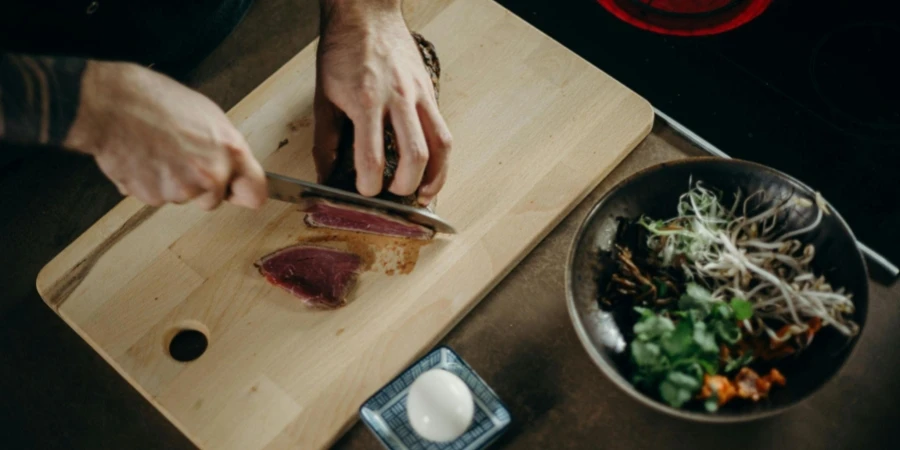Table of Contents
● Introduction to selecting quality knives for 2025
● Key types of knives and their optimal uses
● Analyzing the market landscape for knives in 2025
● Essential factors to consider when choosing knives
● Leading knives and their standout features
● Final thoughts on choosing knives for 2025
Introduction to selecting quality knives for 2025
Choosing the ideal knives is crucial to fulfilling the range of needs in today’s modern kitchens. Top-notch knives provide accuracy, effectiveness, and sturdiness, streamlining chores like cutting, slicing, or dicing by making them quicker and simpler. In any professional environment, dependable knives made from top-grade materials deliver sharpness and durability, reducing the frequency of replacements needed and minimizing maintenance efforts. In today’s market, you can find a range of knives with various designs and functionalities, from delicate Japanese blades perfect for precise cutting to sturdy European models tailored for heavy-duty tasks. Choosing high-quality knives guarantees a seamless cooking process and enhances the culinary experience by providing tools that boost efficiency and performance.
Key types of knives and their optimal uses
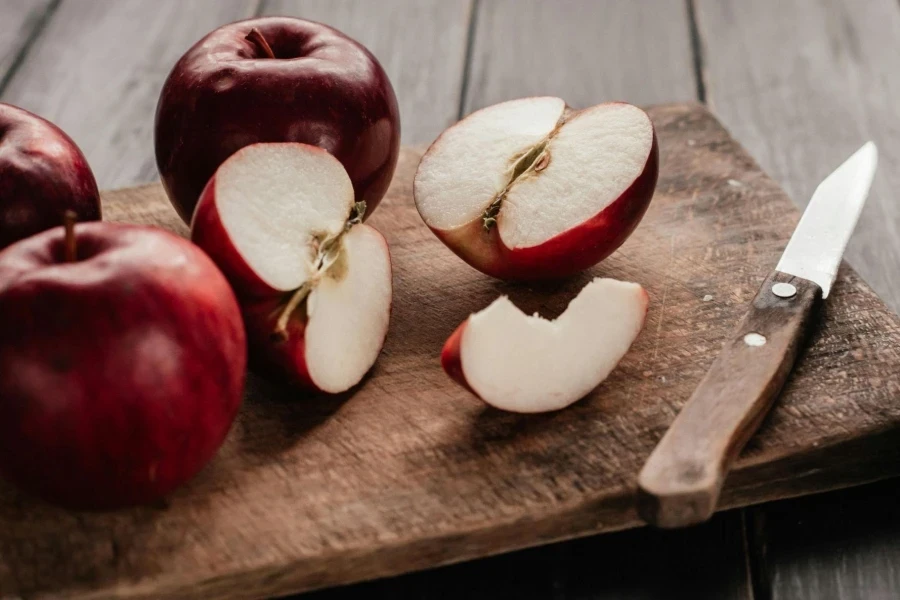
Chef’s knives: the backbone of any kitchen: The chef’s knife is essential for any kitchen, recognized for its adaptability and ability to handle a broad range of culinary tasks. Typically, they are around 8 inches long. They can be found in different sizes to match individual preferences and cooking techniques like slicing and chopping. The European-style chef’s knife is known for its weight and curved blade design, which allows for a repetitive cutting motion. Chef knives are known for their design and straight edges that enable accurate and clean slicing. It is a perfect choice for handling delicate ingredients with ease. Their balance of weight and size and the straight blade shape make them the chef’s versatile tool for food prep in any kitchen setting.
Specialty knives: Specialized knives cater to precision and purpose in the kitchen. The Santoku, known for its thin, lightweight blade, is ideal for slicing, dicing, and mincing, offering smooth, controlled cuts without heavy pressure. The nakiri knife, with its flat blade, is designed for vegetables and allows a straight, clean slice through soft produce without the need for a rocking motion, preserving the integrity of delicate items. Meanwhile, the cleaver is suited for heavy-duty tasks, like breaking down large cuts of meat and cutting through bone, with its thick, durable blade that can handle rigorous use. These knives offer unique features tailored to support specific cooking methods and are essential tools in various kitchen environments.
Utility and paring knives: Utility and paring knives may be small but deliver agility and precision. The utility knife is great for those in between tasks like slicing fruits and trimming meat without the heft of a chef’s knife. At the same time, the paring knife shines in jobs such as peeling and corning fruits and veggies with precision. They’re perfect for tasks and precise handheld cutting due to their compact size and sharp blades, essential for fine cuts in food preparation. Utility and paring knives work well with larger knives by offering added precision and control for intricate cooking tasks.
Analyzing the market landscape for knives in 2025
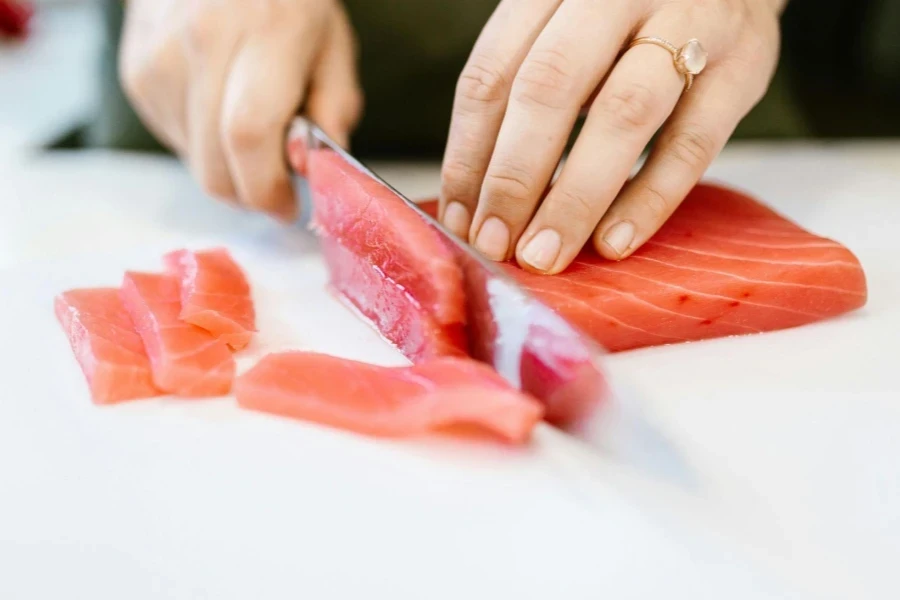
3.1 Market demand and growth insights
As culinary activities are popular, especially among younger demographics, interest in high-quality and durable kitchen tools is rising. Home chefs seek professional-grade tools to improve their cooking experiences, mirroring trends seen in the restaurant industry. Moreover, professionals in the industry are also driving the need for high-quality products as they are essential for ensuring operations and excellence in fast-paced kitchen environments. The shared passion fuels a trend in areas where home cooking and culinary traditions hold special importance.
Grand View Research reports that the worldwide kitchen knife market is estimated at USD 1.96 billion in 2023 and is expected to increase to USD 4.12 billion by 2030. This rise is projected to occur at a growth rate of 11.2% from 2023 to 2030 due to the growing need for top-notch, long-lasting, and innovative knife styles in homes and businesses alike.
In 2025, customers show preferences when it comes to purchasing knives. They seem to lean towards high-carbon steel blades for their sharpness retention and lasting efficiency. Ergonomic designs are also gaining popularity as they help reduce hand fatigue and improve grip comfort. This focus on user-friendly handles highlights the growing demand for kitchen tools that prioritize safety and efficiency during food preparation. Furthermore, several customers lean towards knives that prioritize accuracy and maneuverability in their design, often opting for models such as the santoku or nakiri for slicing tasks and the European chef knife for its versatility. This indicates an emerging trend in the market towards valuing both practicality and visual appeal when choosing knives.
3.2 Performance and durability
Longevity and performance top the list of what buyers look for when shopping for knives in home and professional kitchens. Carbon stainless steel stands out for its toughness and resistance to rust, catering well to frequent use. The Rockwell hardness scale is frequently used to gauge how well a knife maintains its sharpness, with a range of 58 to 60 for top-notch chef knives. Blades made from this steel are highly respected for their strength and ability to meet the needs of individuals who depend upon cutting precision for various cooking activities.
Manufacturing advancements have also bolstered the longevity of modern kitchen knives. Today, many knives incorporate full-tang construction, enhancing balance and durability by extending the blade through the handle. Innovations in handle materials, like composites and treated woods, have addressed issues related to grip and comfort, making it easier to use the knives for long periods without sacrificing safety. Manufacturers have also started implementing hardening processes that strengthen the blade and enhance flexibility. This helps reduce the chances of chipping when the knives are used intensively. Manufacturers have also set themselves up to fulfill the increasing demand for durable knives that perform well and for long by emphasizing these qualities.
Essential factors to consider when choosing knives
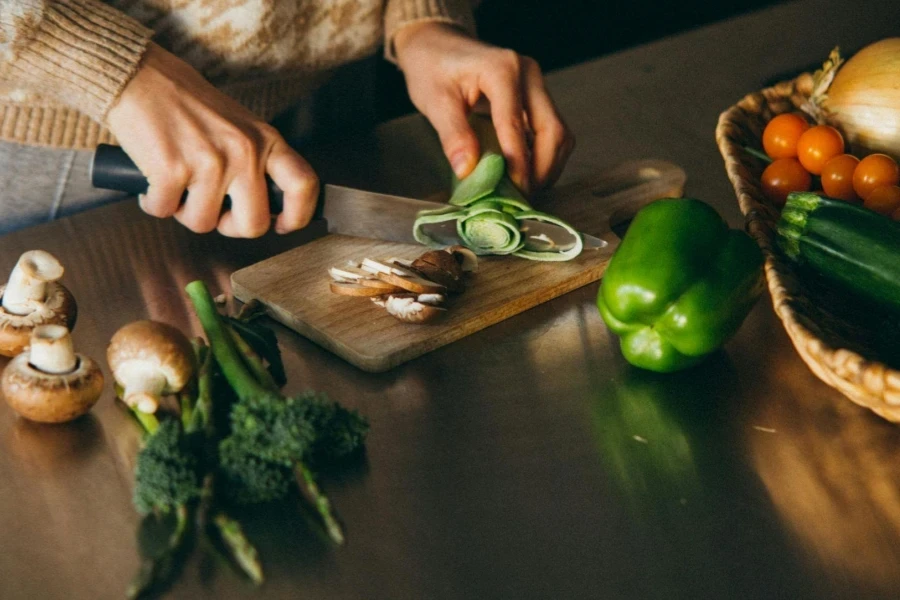
4.1 Blade material and hardness: impact on performance
The type of material used in a knife significantly impacts how sharp it stays over time, how long it lasts, and its overall effectiveness in cutting tasks, which is also considerably affected by the material’s properties. Carbon stainless steel is a preference among many people because it strikes a good balance between holding its edge well and being corrosion-resistant. This combination makes it well-suited for frequent and demanding cutting tasks. Another option is steel, which contains elements like chromium. This type of steel offers durability, which is quite beneficial in environments where knives see heavy usage, and strength is crucial. The Rockwell hardness score plays a role in choosing kitchen knives for use; it usually falls between 55 and 60 for most knives but can go beyond 60 for Japanese knives, known for their exceptional sharpness levels. Different levels of hardness cater to various culinary needs and help buyers find the right knife for their cooking tasks.
4.2 Weight, balance, and comfort: key to effortless use
The comfort and performance of a knife are greatly influenced by its weight and balance characteristics. Japanese and European styles each come with their benefits. Japanese knives are known for their lighter nature and excel at making delicate cuts effortlessly; in contrast, European knives are heavier in design, allowing for a smooth rocking motion that works well for tasks requiring repetitive chopping movements. Moreover, the handles of these knives are ergonomically designed using materials like composite or treated wood to provide a grip and reduce hand fatigue during prolonged usage. Full-tang construction, where the blade extends through the handle, adds a sense of balance and stability, enhancing the cutting process seamlessly. For professionals looking to sustain productivity while minimizing strain, prioritizing balanced and comfortable knives is crucial.
4.3 Maintenance and Longevity
Maintaining a knife properly is crucial for its durability and performance over time. This involves honing and sharpening activities. The act of honing helps align the blade edge for sharpness during use; meanwhile, periodic sharpenings are necessary to restore a dulled edge and ensure prolonged effectiveness. Knives crafted from carbon steel typically require less frequent sharpenings as they maintain their edge well with consistent maintenance. For individuals looking for low-maintenance options, stainless steel knives provide resistance to rust, making them easier to care for in humid settings. Storing your knives properly with knife blocks or magnetic strips can help keep the blades in shape and maintain their reliability for the haul.
Leading knives and their standout features
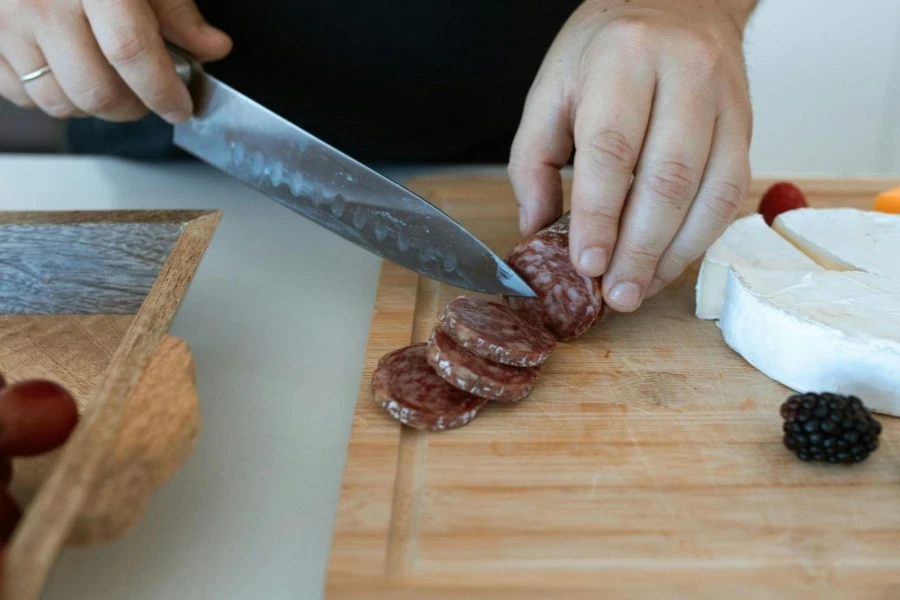
5.1 Top choices among chef’s knives for versatility
Chef knives are highly appreciated for their flexibility. They play a key role in professional and home kitchens due to their durability and adaptability features, such as sharpness and versatility. This enables them to efficiently perform tasks like slicing, dicing, chopping, and mincing. European-style chef knives are known for their heavy weight, which aids in a rocking motion for repetitive cutting tasks, whereas Japanese-style chef knives are lighter and provide precision, ideal for delicate cuts and fine slices. The full-tang design provides stability while ergonomic handles improve comfort to ensure the knife feels balanced and easy to control in your hand, making chef knives meet culinary needs effectively.
5.2 Specialty models: precision for specific needs
Specialized knives offer precise cutting abilities by incorporating blade shapes and functionalities into their designations. The Japanese santoku knife exemplifies this with its light and sharp blade optimized for effortless slicing and dicing of vegetables and herbs. The nakiri knife stands out with its edge designed for vegetable cuts that keep fragile produce intact. On the side, the wide and sturdy blade of the cleaver is designed for jobs like slicing through bone or managing large pieces of meat. Specialty knives have distinct perks that improve cooking effectiveness and precision.
5.3 Budget-friendly and premium picks: balancing cost and quality
The knife market in 2025 provides options across various price points, balancing cost with quality to meet different preferences and budgets. Budget-friendly knives often feature high-carbon stainless steel blades that maintain sharpness while offering resistance to corrosion, a combination that delivers good value for everyday use. These models also frequently include ergonomic handles to enhance comfort and control, ensuring performance without unnecessary expense. On the premium end, high-quality knives often incorporate refined materials, such as rare woods for handles or advanced hardening processes, which enhance longevity and aesthetic appeal. Whether economical or high-end, these options cater to diverse needs, making it possible to invest in a knife that matches specific culinary requirements and quality expectations.
Final thoughts on choosing knives for 2025
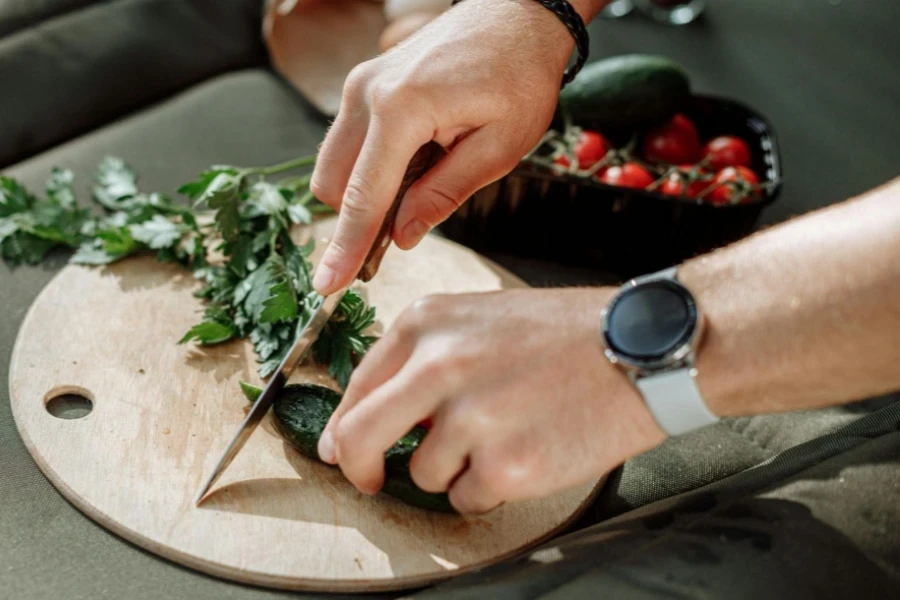
Quality, durability, and performance remain paramount when selecting knives that stand the test of time. With a range of top-performing chef’s, specialty, and budget-friendly knives available, choosing the right tools hinges on understanding material strengths, blade design, and user comfort. High-carbon stainless steel, ergonomic handles, and precise craftsmanship are essential features that enhance efficiency and control while maintaining sharpness and longevity. Considering these elements helps ensure informed decisions that meet today’s evolving culinary needs, supported by advancements that continue to shape the knife market for professional and personal use.
